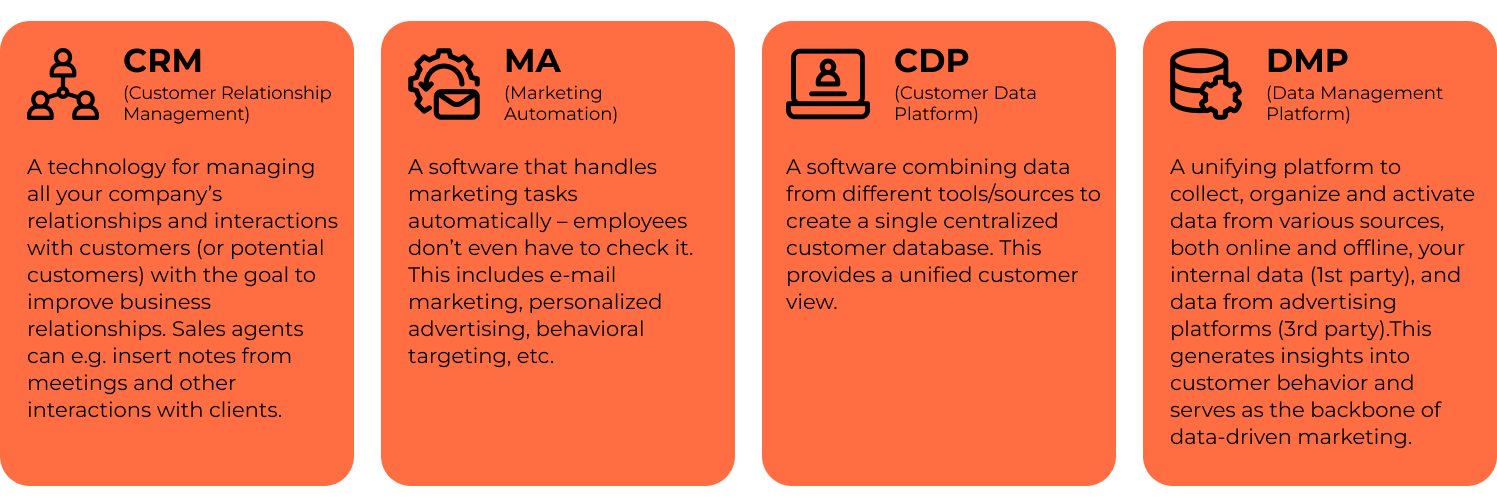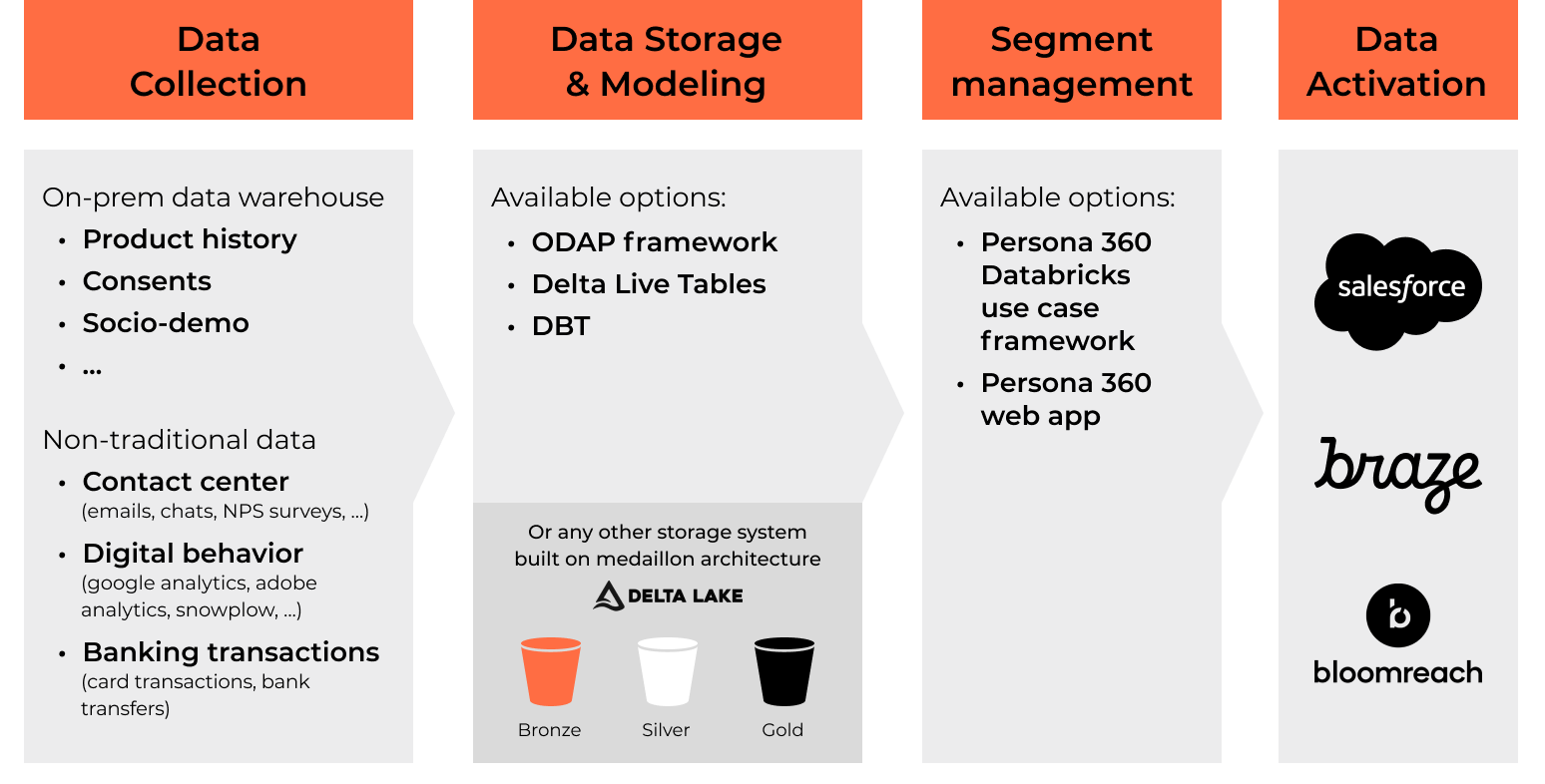Composable CDP: Use Best-In-Class Components for the Best Insights
Are you utilizing your data in the most efficient and future-proof way?
A composable Customer Data Platform (CDP) sits on top of your organization’s cloud data platform and combines your favorite software and tools for data collection, storage & modeling, and activation.
Unlike traditional all-in-one CDPs, a composable CDP is like Lego building blocks — you pick the best components to build what you want. To personalize customer experience, to leverage automation and to power up your marketing.
Traditional vs. Composable
Classic CDPs integrate different needs into a single streamlined product. Such a platform creates a unified customer database and offers various functionalities (e.g. data collection) that are quickly accessible by other systems.
A composable CDP, on the other hand, utilizes the best-in-class components for every step using your preferred components. Data collection and data creation systems of your choice, a data platform to store and process the data, and components to activate the insights in CRM, marketing or self-service analytics. By utilizing the very best components for every aspect of your customer data journey you can unlock limitless business opportunities and make better-informed decisions. Transform your data into something truly remarkable with a composable CDP.

Customer expectations changed for good: treat me like you know me
The customer-centric shift is happening. Right now. Personalization and customization are what customers are getting used to and expect from businesses. Data about customers need to meet at one place to get processed efficiently — and to provide a unique customer experience and the best decision-making, in e.g. personalization, product design, design thinking, and your internal processes.
As this is a new standard defined by challenger companies (bigtech, fintech and others), customers expect personalized experiences even from more conventional businesses, such as banks or insurance companies. While all-in-one solutions work well for small businesses, big players in financial services or e-commerce are better off with their tech stack sharpened with cutting-edge technology components, allowing them to dig the best data possible.
Layers of composable CDP. How does it work?
The idea behind composable CDP is simple – using top-notch software to collect, unify, understand and activate various data. Composable CDP consists of the same parts as traditional CDP:
- Data collection from different sources of customer interaction (including metadata) provides context of customers’ specific digital interactions. CDP follows up on it and integrates this data. Traditional institutions have a lot of unused and locked data which aren’t used at all.
- Data storage, unification and analyses in a unified database that provides a 360-degree view of each customer. Using these unique insights powers the organization’s personalization, facilitates marketing cross-selling/upselling opportunities, and more.
E.g. the collaborative Databricks Lakehouse Platform supports any data (batch, streaming, structured, unstructured) and all of this data can be directly used for BI and ML/AI. Persona 360 provides the equipment you need to quickly start the personalization use cases in the Databricks platform.
- Data activation is the final puzzle piece, unlocking the value stored within your lakehouse. CDP allows the leveraging of data available in the platform using pre-built integrations. Used by sales, marketing, or customer support teams.

5 key benefits of composable CDP architecture for your personalization efforts
Using composable CDP brings you multiple benefits:
- Best-in-class solutions. Make no compromises, keep using your favorite software and tools, avoid double costs, and leverage your investments.
- A composable CDP is no black box, the data is transparent, and can be extended, checked and integrated into various tools and systems.
- Maximized use of your customer data. By capturing all data, you get to understand your customers’ behavior and make the most of these rich insights for personalization, advertisement targeting, marketing and more
- Future-proof, easily adaptable to your future needs and changing use cases. You can add (and remove) solutions as you wish, so they always serve you well.
- Fast implementation and easy maintenance. Implementing an all-in-one CDP is challenging, especially at an enterprise level. As it revolves around existing customer data, data integration must be implemented across different sources — this often takes months. A composable CDP is much quicker to implement and easy to maintain as it can be implemented module by module, step by step.

More information
Want to learn more? We are happy to share details about our solution Persona 360 as well as our experience with implementing composable CDP architecture and success stories from banking, insurance or e-commerce.
Feel free to contact us via contacts on our website to schedule a meeting.
Author: Matej Matoulek
Need to Know More?
Ask us anything
Key contacts

David Vopelka
FinTech lead | AI & personalisation expert
 Search
Search



